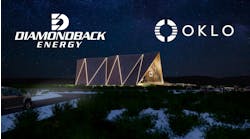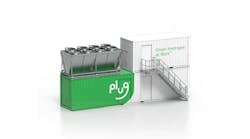Southern California Gas (SoCalGas) was the first large natural gas utility in the US to set a goal to achieve net-zero greenhouse gas emissions by 2045. And it’s continuing to break barriers, this time by producing its first kilogram of renewable hydrogen meant for use in a residential hydrogen microgrid.
According to Neil Navin, vice president of clean energy innovations at SoCalGas, the project “shows the essential role clean fuels like renewable hydrogen can play in meeting California’s clean energy and resiliency goals and highlights our progress toward making net zero a reality.”
Powered by renewable hydrogen microgrid
The project is housed at the utility’s [H2] Innovation Experience in Downey, California, where a 2,000 square-foot home has been designed to demonstrate how a renewable hydrogen microgrid can provide resilience and reliably power neighborhoods.
The home is built to meet LEED Platinum standards with solar panels powering the home on sunny days. An on-site electrolyzer uses excess solar energy to generate renewable hydrogen, which is then stored in an on-site fuel cell. The stored energy is converted back into electricity as needed.
The only byproduct of the process is water.
SoCalGas also plans to blend renewable hydrogen with natural gas to power certain appliances in the home, including a tankless hot water heater, clothes dryer and gas stove.
Understanding the colors of hydrogen
Hydrogen production is color-coded based on the carbon intensity of the production process. “Grey” hydrogen is most commonly seen today, and it’s produced with fossil fuels. Emissions generated during the grey hydrogen production process are unabated and are typically released into the atmosphere.
“Blue” hydrogen is produced with natural gas, but carbon capture and storage technologies are used to abate emissions.
Clean, or “green” hydrogen, is produced with 100% renewable energy like wind, solar and hydropower. The process, as demonstrated at the [H2] Innovation Experience, uses an electrolyzer to separate water from hydrogen and produces zero greenhouse gas emissions.
Green hydrogen gets a big boost from the IRA
The recently passed Inflation Reduction Act of 2022 (IRA) includes $30 billion in funding to support the development of clean hydrogen technologies. It is expected that mechanisms like the hydrogen production tax credit (PTC) will accelerate the adoption of green hydrogen by offering up to $3 per kilogram of eligible hydrogen (a kilogram of hydrogen is roughly equivalent to a gallon of gasoline).
To be eligible for the PTC, the hydrogen source must reduce greenhouse gas emissions by at least 60% as compared to the current unabated grey hydrogen production process.
The IRA’s other incentives around renewable energy generation are also expected to benefit the clean hydrogen market. As more renewable energy sources come online, there will be more opportunities to produce green hydrogen.
Hydrogen also gets a boost from 2021’s Infrastructure Investment and Jobs Act, which includes funds to develop regional hydrogen hubs.
[H2] Innovation Experience marks a key milestone for green hydrogen
As part of its efforts to get to net zero, SoCalGas is actively developing tools to aid what are commonly thought of as hard-to-electrify sectors including hydrogen, hydrogen blending, renewable natural gas and carbon management.
The company recently announced a proposed collaboration with the University of California, Irvine to demonstrate how hydrogen can be blended into the university’s existing natural gas infrastructure. The goal of the partnership is to demonstrate how hydrogen can be delivered at scale through existing natural gas infrastructure.
SoCalGas has also proposed a green hydrogen energy infrastructure system for the Los Angeles basin. The Angeles Link would serve electric generation, heavy-duty transportation, heavy industry and manufacturing and other hard to electrify sectors of the economy.
SoCalGas’ Navin said that the production of [H2] Innovation Experience’s first kilogram of hydrogen is a key milestone in the utility’s clean energy strategy. “Projects like this, along with efforts like those to develop a statewide hydrogen blending standard, have the potential to drive down the costs of renewable hydrogen, making it a valuable tool to help decarbonize California,” he said.
Blanca Pacheco, the mayor of Downey, California, home of the [H2] Innovation Experience demonstration project, echoed that by calling the company’s accomplishment a momentous achievement. “The use of green hydrogen could greatly reduce carbon emissions and help in our fight against climate change,” Pacheco said.
Track more news on renewable hydrogen microgrids. Subscribe to the free Microgrid Knowledge Newsletter.








